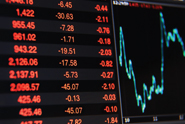Recently, there has been a lot of chit-chattering, specifically after the Third Plenum, about the pace, scope and direction of reforms in China. Specifically, everybody seems to be debating the pace of the opening up and innovation in local capital markets. If we focus specifically on the Chinese stock market, both the domestic Yuan A shares segment and the overseas depositary receipts (mainly HKD-denominated H shares in Hong-Kong and NYSE/Nasdaq listings) it is no mystery Chinese equities have been, for the most part, horrendous for most of the last 6 years.
In fact, we had the popping of the bubble on the Mainland in early 2008 from which domestic shares never really recovered. Up to that point, China was engulfed in a mega 90’s-style stock-frenzy that, predictably, ended up in tears and anger. Since then, A-shares had had their ups and downs, but for the most part they lagged behind every other exchange on the planet, except maybe the most derelict Southern European Bourses. The Hang Seng China Enterprises Index (CEI from now on), the benchmark for the H shares which traded at a huge discount during the boom years, have fared a bit better but not by a wide margin.
There have been some temporary and localised bubbles, particularly in consumer goods names between 2009 and 2010, but overall Chinese stocks have been largely catastrophic. We all know how the story goes: around 70% of the CEI is made up of state-owned enterprises operating in energy and heavy industries complexes or banks. Notoriously not exactly the best sectors of the Chinese economy in terms of earnings prospects & visibility and quality of management and corporate governance. Basically, the market there has not reflected the rise, symbolised by the explosive Internet revolution of the last 3-4 years, of the Chinese consumption story.
Plus, there is the issue of the sketchy accounting and IPO practices that have led to a recently lifted ban on mainland IPO’s and a derating of the multiples for companies listed in Hong-Kong and elsewhere. For example rarely do HK listings obtain forward P/E higher than 11-12, while for instance, a Taiwan or Malaysian listing can go up to above the 14 threshold.
Still the Chinese stock market is not dead; in fact, instead of a Nikkei generational slump, we might be close to a turning point. Why would it be so? If you think about it, the decision to allow companies to go public again in Shanghai/ Shenzhen might reek of desperation, as state-owned enterprises (SOES) could be stuck with a refinancing mountain to climb. It is calculated that between paper maturing and interest, the Mainland corporate bond market has a 2.9 trillion dollar liquidity problem to solve. We all know how there isn’t a truly liquid secondary market for this kind of securities in China, where basically corporate bonds are another tool for state-owned banks to circumvent their lending limits to SOES.
Therefore, it isn’t strange that it’s mostly SOES apparently jumping on the bandwagon of the new IPO open tap. In a recent article Bloomberg pointed out how there are 760 companies in China with plans to go public, most of them still being SOES.
Is it all a pump and dump scheme? Apparently, the market has decided so far to trust the promises of reforming the state productive apparatus of the country — it isn’t maybe too coincidental that the biggest (and most successful) H shares IPO last year in Hong-Kong, was for Cinda Asset Management Corp., the bad bank created in 1999 to clean up the balance sheets of the major financial institutions of the country. The management of the company expect to bring in a big deal of fresh, new business, thanks to the inevitable clean up of the bank books after their post-2008 Great Keynesian Lending Extravaganza. Basically, China is bracing herself for printing lots of new Yuan to well, fix a mountain of bad debt. American QE taught us how this will be an opportunity for immense profits.
So the market doesn’t appear to be so closed-minded about SOES stocks anymore, despite a very difficult year for emerging markets. On top of that, China is now increasingly recognised as almost a safe haven among emerging nations, due to her enormous manufacturing, political and financial power (and military too, but that’s another story), to the point that China is scarcely a developing nation anymore, it’s more akin to a developing super-power.
During the toughest days of the pre-September FOMC meeting the fairly illiquid Dim Sum market suffered a bit, but the Renminbi (whose bandwidth has been recently expanded) has remained remarkably stable among a rash of emerging FX volatility. With a deeper debt market and a currency fast-approaching world reserve status (China this year will conduct around 17% of her foreign trade in Yuan), it is not so strange that, going down in the capital structure to equities, we are finally finding some firmer ground.
Even more interesting, the situation appears to be outside of the beleaguered SOES complex: in fact it has witnessed a stellar bull run for the most competitive Chinese firms riding the explosion of consumerism in the country: we don’t need to remind our readers how stocks like Baidu, Great Wall Motor or Tencent have sailed through 2013.
True SOES financial difficulties remain, and it’s possible in 2014 that we will see the first corporate bond default in the history of China, which will test investors’ nerves. At the same time, both domestic and international players are not averse to Chinese companies; they’re just averse to bad Chinese companies. They’re even willing to give many competently run SOES the benefit of the doubt. In fact, when it comes to good private enterprises, they can’t get enough of them, sending their stocks to embarrassingly high multiples.
This is slowly but surely creating an environment of confidence: many IPO’s are carried out nowadays with a cheap price tag. This encourages more sector rotation and successful listings on the stock market, which in turn attract more attention over the whole Dragon equity supply. Needless to say, if and when an Ali Baba listing will happen, it could be a watershed in Chinese financial history.
In fact, there’s a good chance in a distant future that we will look at the previous national stock bubble as a proto-capitalist experiment, where authorities tested the mechanisms of modern securities markets with some state companies and some chump change carved out of the enormous endowment of national savings. After a few years, the real history of the Chinese stock market is about to begin.










